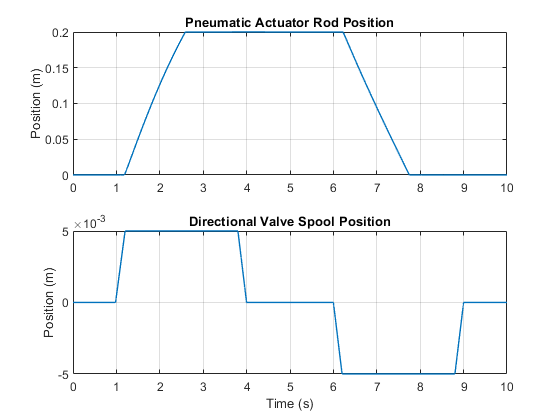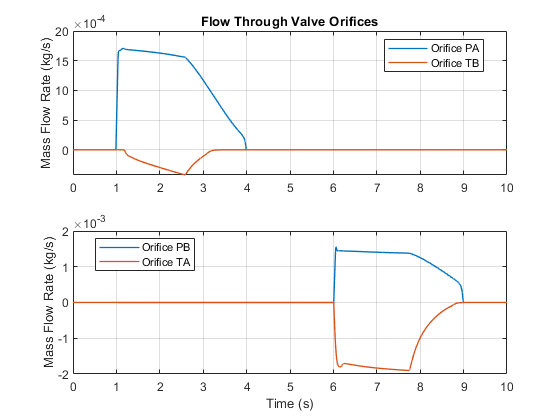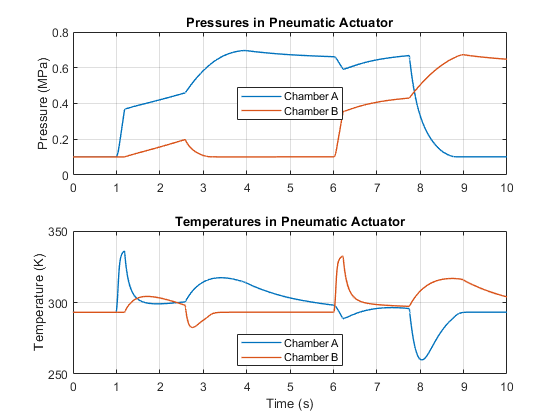Actuation Circuit with Custom Pneumatic Components
This example shows how to model a controlled actuator using simplified custom pneumatic components. There are two across variables, defined as pressure and temperature, and two through variables, defined as mass flow rate and heat flow rate. The simplified approach means that every node in the circuit must have a volume of gas associated with it. This physical volume of gas in the circuit is represented by the Constant Volume Pneumatic Chamber blocks, the Pneumatic Piston Chamber blocks, and the Pneumatic Atmospheric Reference block. Conversely, the Foundation Library gas components require no such connection rules at every node. See the Pneumatic Actuation Circuit example for a more capable way of modeling pneumatic systems using Foundation Library gas components.
During the simulation, the spool of the directional valve is moved to its maximum positive displacement, and the actuator moves the load until it reaches the actuator end stop. The valve is then centered, and the load is held. Next the valve moves to its maximum negative displacement and the actuator retracts to its minimum length. The valve is then centered again, locking the load in position.
Model

Directional 4-Way Valve Subsystem
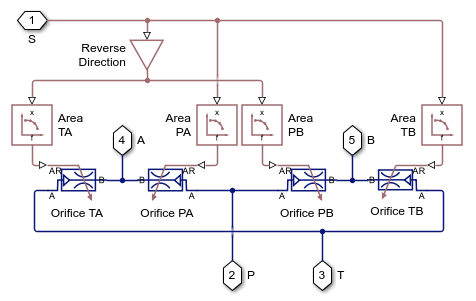
Double-Acting Pneumatic Actuator Subsystem
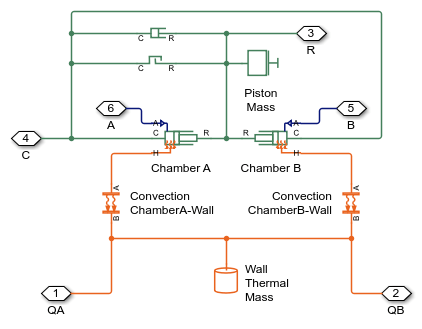
Pipe A Subsystem
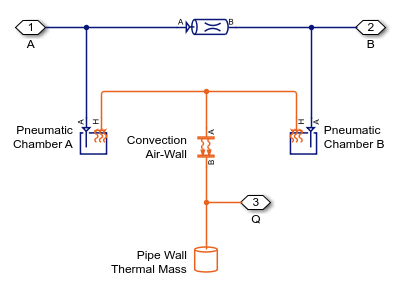
Simulation Results from Simscape Logging
